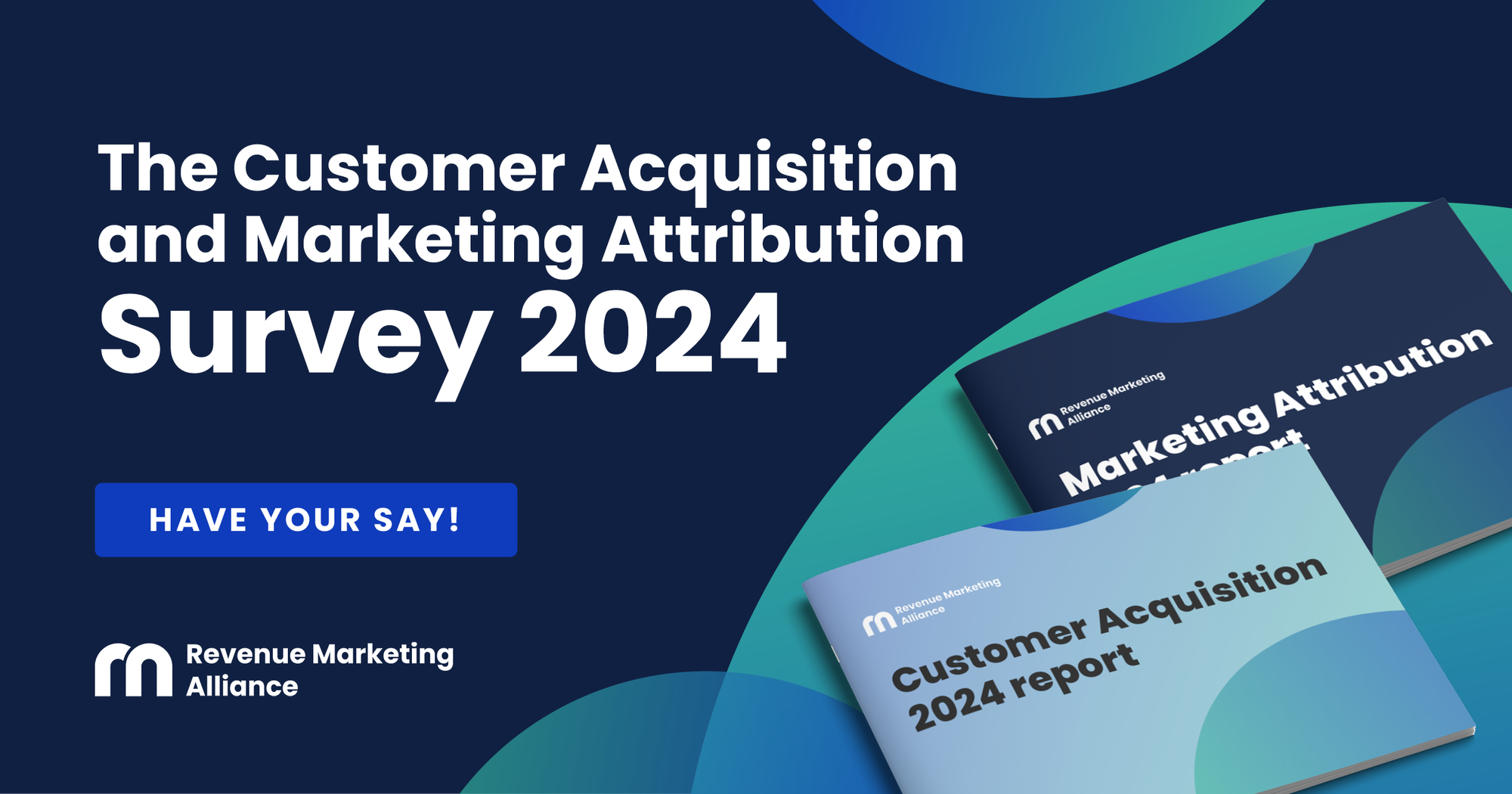Generating demand and capturing demand may sound similar, but in the world of marketing, they're two very different beasts.
In this article we’ll tell you all about:
- What demand generation is
- What demand capture is
- The benefits of demand gen and demand capture
- How these two concepts differ
- How they work together
Let's get started!
What is demand generation?
Demand generation refers to marketing activities and strategies focused on creating interest and attracting new potential customers for a business's products or services.
It’s like casting a wide net to fish for leads. You're focused on spreading brand awareness and attracting as many potential new customers as possible.
The goal is to generate inbound leads by raising awareness of the brand, products, and solutions through:
And so on.
Here, the likes of content marketing, social media, and advertising work their magic – you're putting on a spectacular show to gain attention and get visitors hooked on your brand. Sure, not everyone will bite, but with compelling content and outreach, you'll capture some promising new leads.

Effective demand generation helps get a company's message in front of the right audiences and compel them to engage further and move down the sales funnel.
What is demand capture?
Demand capture refers to marketing and sales processes aimed at converting and qualifying leads to become sales-ready.
Demand capture is all about reeling those leads in and turning them into sales. This is where the rubber meets the road – you need to engage each lead, understand their needs, nurture them with relevant information, and assess whether they're ready to buy.
Demand capture activities may look like:
- Lead scoring
- Landing pages and forms to capture visitor information
- Determining sales readiness
- CRM (customer relationship management) utilization and tracking
- Lead nurturing through targeted content and messaging
- Website analytics
- Sales inquiries and conversations
All of these activities help determine if a lead is sales-qualified and ready to become a customer.
Essentially, while demand generation brings in unqualified leads, demand capture nurtures those leads, scores and ranks them, determines sales readiness, and passes on qualified opportunities to the sales team.

What’s the benefit of demand generation?
Demand generation provides critical top-of-funnel benefits that lay the groundwork for sales success. By raising awareness and attracting inbound leads, demand gen gives your business fuel for future growth.
Key benefits of demand gen include:
Increased brand awareness
Increased brand awareness and recognition in your market: Content marketing, PR, advertising, and promotion expand the exposure of your brand, offerings, and messaging to reach and resonate with more of your total addressable market.
More inbound leads
More inbound leads and net new contacts in your pipeline: Demand gen provides a larger pool of contacts interested in your solutions, that you can then nurture and qualify. Outbound tactics like content syndication and paid ads directly generate more inbound leads.
Improved market reach
Improved reach to your total addressable market: Multi-channel demand gen campaigns ensure you reach a broad audience and don't miss qualified prospects you can't directly contact via outbound sales.

Engage prospects early
The ability to attract and engage potential customers early in their buyer’s journey is vital. By providing valuable info to prospects early in their buyer's journey, you establish your company as a trusted partner and resource.
Data insights
Valuable data insights into what content and messaging resonates best with your audience: The metrics from your demand gen campaigns provide data to refine strategies and tactics to improve results over time.
What’s the benefit of demand capture?
Demand capture allows you to maximize the value of your hard-won leads.
Key benefits of demand capture include:
Effective lead nurturing
More effective lead follow-up and nurturing to move leads down the funnel: Multi-touch personalized content and messaging helps to…
- Build relationships with prospects,
- Answer their questions, and
- Move them to the next stage.
Higher conversion rates
Higher lead conversion rates by engaging and qualifying leads for sales readiness: Scoring and qualifying leads means you focus sales resources only on those demonstrably closer to purchasing. This improves win rates.
Increased sales productivity
Improved sales productivity by focusing on qualified, sales-ready leads: Time is precious for sales teams. By screening out unqualified leads, they avoid wasting time and can focus on high-potential deals.
Marketing and sales alignment
Tighter alignment between marketing and sales teams on shared goals: Joint definition of lead scoring, shared lead handling processes, and service level agreements ensure efficient transition of qualified leads between teams.

Better forecasting
Better forecasting and revenue predictability based on solid pipeline management: Advanced analytics on trends for lead source, qualification rates, sales cycle length, win rates, etc. allows more accurate pipeline and revenue predictions.
Full lifecycle insights
Full lifecycle insight on leads to inform future demand gen efforts: Following each lead's full journey from initial attraction to the customer provides data to refine strategies and tactics across the entire funnel to drive more pipeline and revenue.
Reduced churn
Ongoing nurturing of new customers increases retention and upgrades: Insights into which content and messaging resonates with customers after conversion helps strengthen relationships through superior service and support. This full lifecycle view provides data to optimize retention initiatives to maximize customer lifetime value.
What’s the difference between demand gen and demand capture?
The main difference is that demand generation focuses on the top of the funnel, attracting a variety of leads and introducing them to the brand, products, and solutions for the first time.
Demand capture focuses on the middle to bottom of the funnel, engaging and qualifying those leads to determine readiness for a sales conversation.
The key differences between these two functions
Goals
The goal of demand generation is broader brand awareness and lead generation. Demand capture has a more specific goal of qualifying and converting marketing leads into sales opportunities.
Buyer stage focus
Demand generation focuses on attracting early-stage leads just entering the buyer's journey or still in research mode. Demand capture engages leads further along the journey who are closer to a purchase decision.
Activities
Demand gen activities look at a broad target audience, utilizing content marketing, social media, SEO, advertising, and events to reach new customers. Demand capture uses targeted follow-up content like emails, custom content, and event invites to nurture promising leads.
Metrics
For demand gen, key metrics are brand awareness, impressions, inbound lead volume, and cost per lead. For demand capture, you’ll be looking at the likes of conversion rate, sales-qualified lead volume, and marketing contribution.
Data
Demand gen looks to market research and campaign analytics to refine strategies. Demand capture relies on lead scoring data, win/loss analysis, and CRM data to optimize its processes.
Teams
Broadly speaking, while the strategies align, demand gen requires creative marketers focused on asset production and campaign execution. Demand capture needs data-driven marketers skilled at lead management and operations.
Buyer personas
Demand gen addresses the full spectrum of buyer personas across the customer lifecycle. Demand capture focuses on those buyer personas closer to making a purchase.

Budget
Demand gen requires a significant budget for high-volume outbound activities. Demand capture typically has a lower cost for follow-up and nurturing existing leads.
How do demand gen and demand capture work together?
Demand gen and demand capture are a highly efficient team. If you’re looking to enhance your business’s marketing and sales efforts, they can be used effectively – in tandem – to continually funnel new leads into qualified opportunities for sales. The two strategies can also align sales and marketing teams, which, in turn, drives sustainable business growth.
This coordinated effort between marketing and sales is crucial to execute both strategies for success. When done right, you'll have a regular influx of new leads to feed into your sales pipeline.
At a high level, demand generation and demand capture form a continuous loop – demand gen brings in new leads to be nurtured and qualified by demand capture, some of those leads convert to sales, and those new customers then inform future demand gen efforts. It's a beautiful flywheel effect.
More specifically:
- Demand-gen tactics like content marketing and advertising raise awareness and attract new leads that sales can't reach on their own. These inbound leads are the lifeblood of demand capture.
- Demand capture takes these raw leads and through lead scoring, progressive lead nurturing, and sales qualification determines which leads are viable opportunities. This filters and primes the lead pool for sales.
- Insights from demand capture like lead scores, conversion rates, and win/loss analysis should inform content and campaign strategies for demand gen to improve targeting and results.
- Marketing automation and CRM systems provide a shared platform for demand gen and capture teams to seamlessly transition qualified leads from marketing to sales.
- Operational processes like marketing service-level agreements (SLAs) set clear expectations for how marketing will handle and qualify inbound leads before sales follow-up.
- Account-based approaches align demand efforts for named accounts with high-value potential. Campaigns generate leads from target accounts which get prioritized for capture.
- As converted leads become customers, customer marketing and retention elements keep demand capture continuing post-sale to maximize lifetime value.
When demand generation and demand capture work together, they create an engine for a predictable pipeline and scalable success – something we all love to see.

Demand gen vs. demand capture: Closing thoughts
Demand generation and demand capture serve interconnected but distinct purposes. Together, they provide a powerful punch to drive a consistent sales pipeline and revenue growth.
Demand gen uses content, social media, advertising, and other tactics to spread brand awareness and attract new leads, looking broadly to introduce your solutions to new audiences.
Demand capture then follows up by nurturing and qualifying each lead to identify those sales-ready. It focuses on converting that initial interest into tangible opportunities.
When utilized as a team, these strategies align marketing and sales on a shared goal; demand gen feeds the top of the funnel with promising leads, while demand capture efficiently filters and progresses those leads based on buyer stage and qualifications.
For scalable growth, take an orchestrated approach. Leverage demand generation to increase awareness and acquire new contacts, then apply demand capture to systematically qualify and convert high-potential leads for your sales team.
Continually optimize by analyzing performance data and buyer insights. With tight integration of demand gen and demand capture, your pipeline will flow steadily, and revenue will follow.
Now's your chance to influence the most important conversations in revenue marketing
How do leading marketers drive growth? What channels attract and convert customers? Where should budgets be allocated? What metrics matter most?
Our groundbreaking 2024 Customer Acquisition and Marketing Attribution Survey will reveal the inner workings of today's state-of-the-art revenue engines. And you can help uncover the key insights.
The insights gained will be invaluable for staying ahead of rapid changes in 2024.
This is your exclusive opportunity to shed light on:
- Current marketing attribution models and challenges
- The evolving customer journey to purchase
- How teams track and optimize funnel performance
- Emerging strategies to connect with modern buyers
- Key focus areas for growth in 2024
… And a whole lot more.
Take the survey, and at the end, receive a comprehensive Customer Journey framework slide deck to help you and your team acquire more customers with less stress! 👇




 Follow us on LinkedIn
Follow us on LinkedIn



